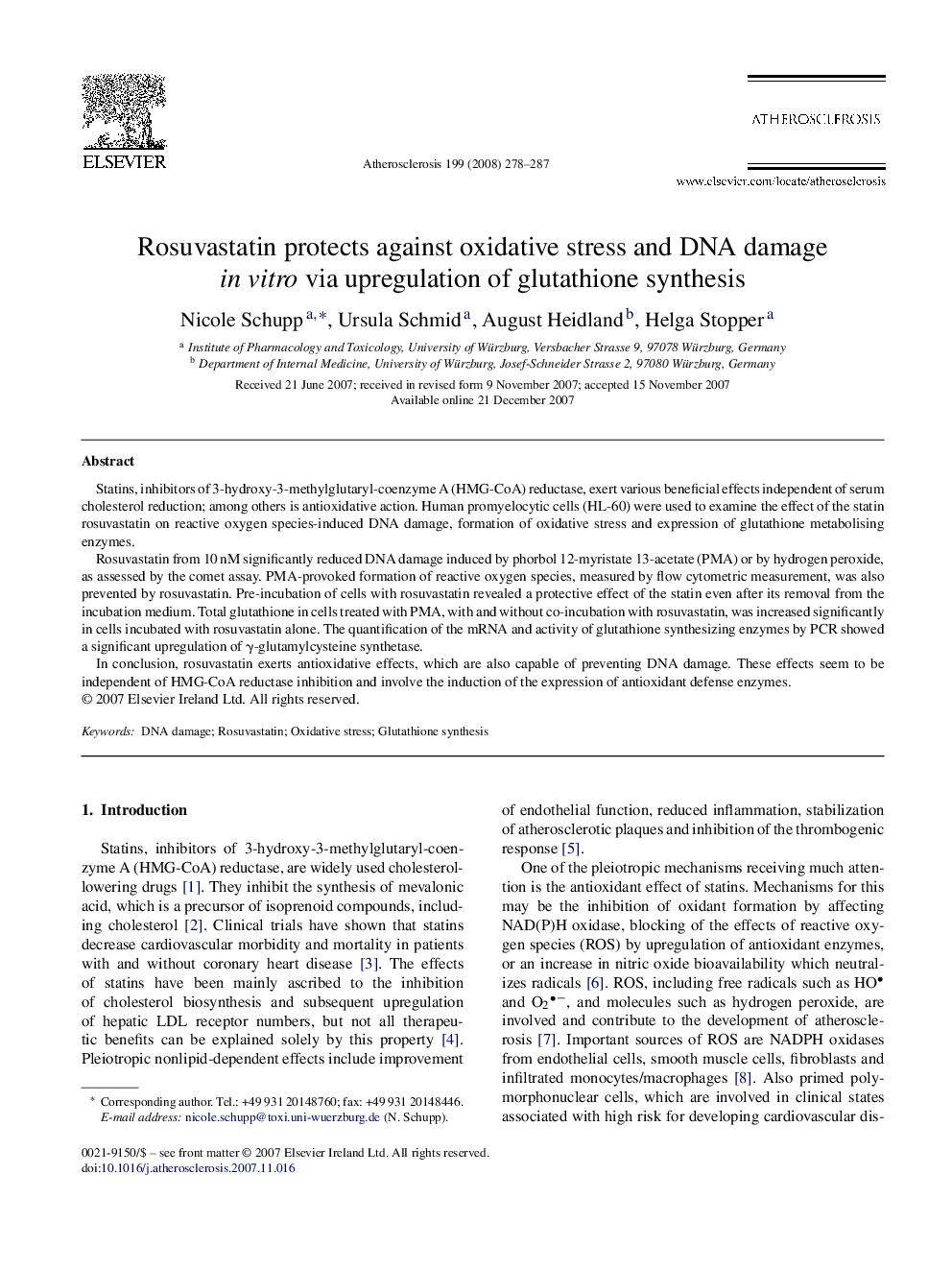| Article ID | Journal | Published Year | Pages | File Type |
|---|---|---|---|---|
| 2894134 | Atherosclerosis | 2008 | 10 Pages |
Statins, inhibitors of 3-hydroxy-3-methylglutaryl-coenzyme A (HMG-CoA) reductase, exert various beneficial effects independent of serum cholesterol reduction; among others is antioxidative action. Human promyelocytic cells (HL-60) were used to examine the effect of the statin rosuvastatin on reactive oxygen species-induced DNA damage, formation of oxidative stress and expression of glutathione metabolising enzymes.Rosuvastatin from 10 nM significantly reduced DNA damage induced by phorbol 12-myristate 13-acetate (PMA) or by hydrogen peroxide, as assessed by the comet assay. PMA-provoked formation of reactive oxygen species, measured by flow cytometric measurement, was also prevented by rosuvastatin. Pre-incubation of cells with rosuvastatin revealed a protective effect of the statin even after its removal from the incubation medium. Total glutathione in cells treated with PMA, with and without co-incubation with rosuvastatin, was increased significantly in cells incubated with rosuvastatin alone. The quantification of the mRNA and activity of glutathione synthesizing enzymes by PCR showed a significant upregulation of γ-glutamylcysteine synthetase.In conclusion, rosuvastatin exerts antioxidative effects, which are also capable of preventing DNA damage. These effects seem to be independent of HMG-CoA reductase inhibition and involve the induction of the expression of antioxidant defense enzymes.
